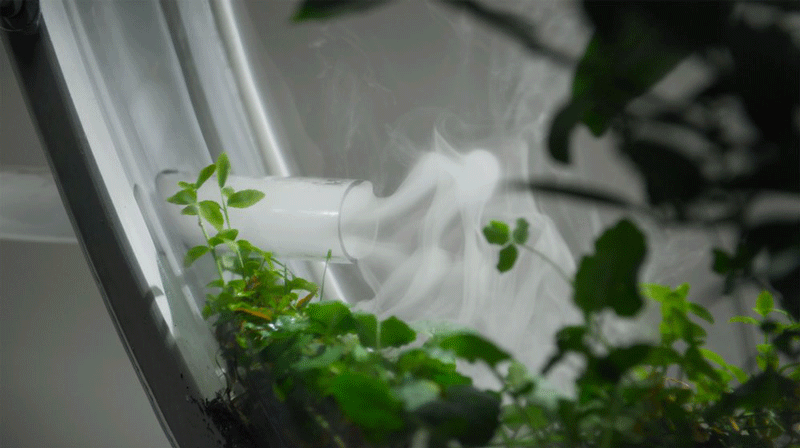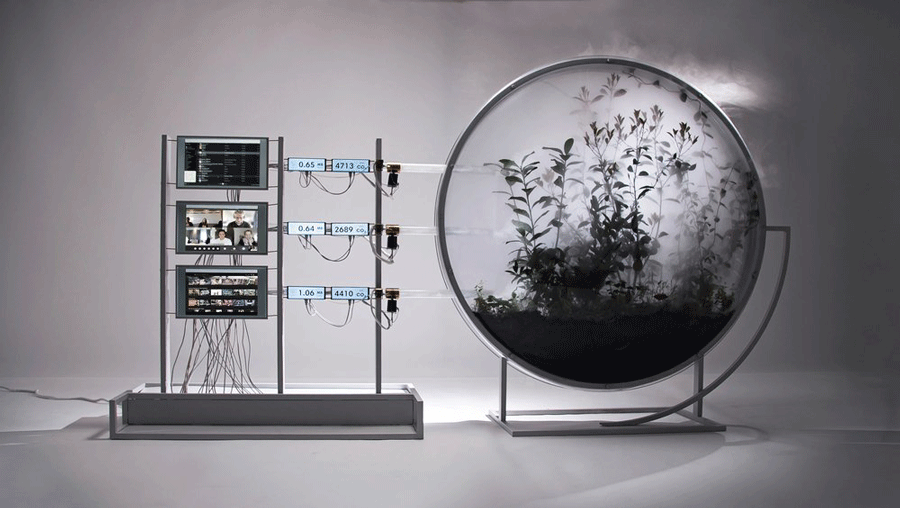Internet usage is ubiquitous, fast, and has grown to become a cornerstone of the 21st-century lifestyle. But amidst growing awareness of climate change and campaigns to lessen our harmful effect on the Earth, the impact of constant Internet usage on our atmosphere often goes unnoticed. Artist Thijs Biersteker aims to rectify this with his new installation MB>CO2, using a visual representation of the Internet’s impact on the environment to support the United Nations Sustainable Development Goals of Responsible Consumption and Production as well as Climate Action.

Every megabyte (MB) of data storage that is used generates 20 grams of carbon dioxide. As a whole, the Internet releases around 1 billion tons of CO2 per year.
“If the Internet were a country, its electricity use would be the third largest in the world, behind China and the U.S.,” Senior Director Analyst at Gartner Aapo Markkanen reported.
Internet usage accounts for 3.7% of total greenhouse gas emissions, a valuable number in a race against climate change in which every percentage point matters.
In the wake of the COVID-19 pandemic, increased usage of technology has become a given in almost everyone’s life. Biersteker’s work accepts this reality, but challenges its viewers to employ more sustainable technology wherever possible: “This work advocates towards sustainable data use by not sending a 10MB attachment photo of your holiday, employing sustainable AI and giving your boss the perfect excuse to skip that next Teams meeting,” Biersteker’s website reads.
The installation offers viewers the opportunity to live-call into the installation, showing in real time the effect a single zoom call can have on the environment. He translates an everyday online activity into a tangible visual representation, equating the “average Zoom meeting” to driving a gas-powered car for 140 meters. Connected to the digital space in which visitors can call in to the installation is a spherical terrarium, meant to represent the natural Earth. Biersteker and his team used averages of available data to calculate the energy used for various common Internet activities: attaching a large file to an email, an hour of streaming something on Netflix, or an hour of video calling. His team writes, “We adjust the work as companies become more transparent in their impact.”

Each minute viewers remain on the call, the CO2 levels inside the biotope rise and quickly cloud the micro-ecosystem from view. Biersteker’s work provides a visceral and chilling display of how the technological Cloud is not the only result of the accumulation of a world of avid Internet users.
Biersteker is known for his works drawing attention to environmental sustainability and negative human impacts, imploring his viewers to consider truly how large their footprint is.
Read more about MB>CO2 and see more of the artist’s work here.
